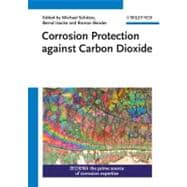
Note: Supplemental materials are not guaranteed with Rental or Used book purchases.
Purchase Benefits
What is included with this book?
| Preface | p. vii |
| How to use the Handbook | p. ix |
| Carbon dioxide | p. 1 |
| Metallic materials | p. 30 |
| Aluminium and aluminium alloys, copper and copper alloys, iron, iron-based alloys and steels, nickel and nickel alloys, titanium and titanium alloys, zinc, cadmimum and their alloys | |
| Nonmetallic inorganic materials | p. 100 |
| Carbon and graphite, binders for building materials, glass, quartz ware and quartz glass, enamel, oxide ceramic materials, metal ceramic materials | |
| Organic materials/plastics | p. 112 |
| Thermoplastics, thermosetting plastics, elastomers, duroplasts | |
| Materials with special properties | p. 148 |
| Coatings and linings, seals and packings, composite materials | |
| Materials recommendations | p. 182 |
| Bibliography | p. 192 |
| Index of materials | p. 209 |
| Subject index | p. 216 |
| Table of Contents provided by Ingram. All Rights Reserved. |
The New copy of this book will include any supplemental materials advertised. Please check the title of the book to determine if it should include any access cards, study guides, lab manuals, CDs, etc.
The Used, Rental and eBook copies of this book are not guaranteed to include any supplemental materials. Typically, only the book itself is included. This is true even if the title states it includes any access cards, study guides, lab manuals, CDs, etc.